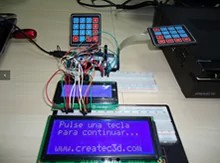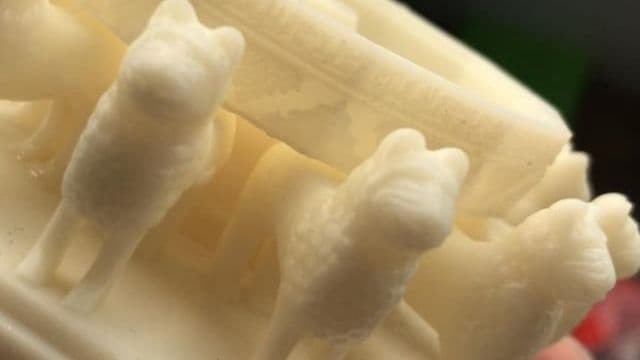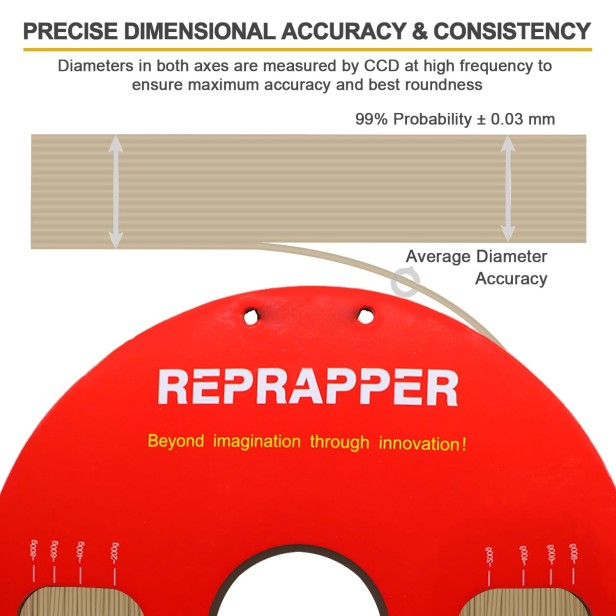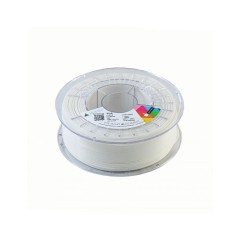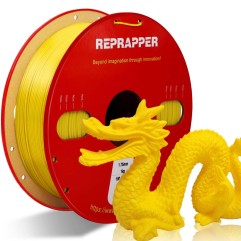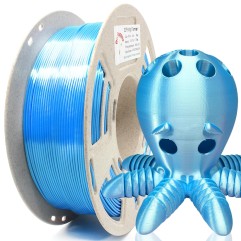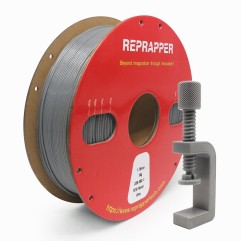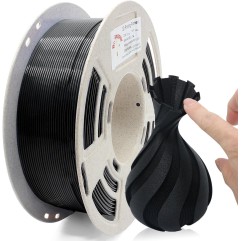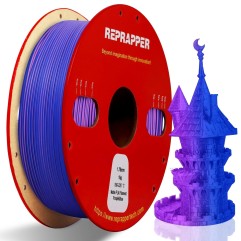- On sale!
- New
PLA MADERA (WOOD) REPRAPPER | IMPRESORAS 3D
WOOD-LOOK PLA FILAMENT FOR REPRAPPER 3D PRINTERS
FILAMENT DIAMETER: 1.75 MM
WEIGHT: 1 KG
Te quedan 120€ para el envío gratis

24h Delivery

FREE for orders over 120€

Secure payment
Usually joint purchase

Información del producto
PLA 3D PRINTER FILAMENT REPRAPPER CHARACTERISTICS:
- Material Type: PLA
- Technical Name: Polylactic Acid
- Filament Diameter: 1.75mm
- Diameter Tolerance: ±0.03mm
- Color: White, black, red, gray, blue, green, orange, purple, pink, silver, yellow
- Printing Parameters:
- Printing Temperature: 190-240℃
- Printing Bed Temperature: Not required (or 60℃ if applicable)
- Manufacturer: Reprapper
- Properties according to ASTM:
- Physical Properties:
- Density: 1.254 g/cm³ at 23℃ (D792 ASTM)
- Melt Flow Rate: 5.6 g/10min at 190℃, 2.16 Kg (D1238 ASTM)
- Mold Shrinkage: 0.4-0.6% at 23℃ (D955 ASTM)
- Mechanical Properties:
- Tensile Strength: 36.7 MPa at 50mm/min (D638 ASTM)
- Elongation: 6% at 50mm/min (D638 ASTM)
- Flexural Strength: 68.6 MPa at 2mm/min (D790 ASTM)
- Flexural Modulus: 3050 MPa at 2mm/min (D256 ASTM)
- Impact Resistance (IZOD): 2.9 KJ/m² at 4mm, 23℃
- Physical Properties:
USAGE AND APPLICATIONS OF REPRAPPER PLA + FILAMENT IN 3D PRINTERS:
PLA (polylactic acid) filament is one of the most popular and versatile materials for 3D printing due to its ease of use, biodegradability, and wide range of applications. PLA filament is easy to pigment so we can find a huge range of possibilities for our 3D prints. On this occasion, we encounter a variant that incorporates real wood particles or wood composites to create an authentic wood appearance and feel in 3D prints. The percentage is not high because if it were, it would clog the 3D printer.
Wood filament in 3D printers offers a unique alternative for those seeking to add a rustic and natural touch to their 3D printing projects. The use of wood PLA filament is ideal for a variety of creative and functional applications. For example, it is perfect for manufacturing display models, architectural mock-ups, toys, home accessories, decorations, and art projects that require an authentic wood look.
Its ability to mimic the texture and tone of real wood makes it a popular choice among designers, artists, and 3D printing enthusiasts who want to add an organic and natural element to their creations.
We must bear in mind that working with wood PLA filament is not the same as working with basic PLA, it is very important to:
- Respect the printing temperature: it ranges between 190°C and 240°C. It is crucial to adjust the temperature properly to avoid problems such as extruder clogging or material degradation.
- Printing Speed: Due to the wood particles in the filament, it is recommended to print at slower speeds compared to standard PLA. This helps ensure even distribution of wood particles and better print quality.
- Care for the extruder: as we have mentioned, wood filament may contain wood particles, so it is important to regularly maintain the extruder. Cleaning and purging the extruder periodically can help prevent clogs and extend the life of the 3D printer.
- Proper Storage: Wood PLA filament is susceptible to moisture absorption, which can negatively affect print quality. It is recommended to store the filament in a cool, dry place, preferably in a sealed bag with desiccant to avoid moisture.
Is it difficult to paint, sand, or varnish PLA filament?
No, it is not very difficult to paint, sand, or varnish PLA filament. In fact, PLA is known to be a fairly post-process-friendly material due to its non-toxic, easy-to-work-with, and smooth nature.
- Painting: PLA can be easily painted with acrylic paints, sprays, or even permanent markers. Before painting, it is recommended to lightly sand the surface with fine-grit sandpaper to improve paint adhesion. After painting, a clear sealant or varnish can be applied to protect the paint and improve durability.
- Sanding: PLA can be sanded with fine-grit sandpaper to smooth out printed layers, remove imperfections, and improve the overall appearance of the piece. It is important to sand carefully and evenly to avoid damaging the printed piece.
- Varnishing: PLA can be varnished with clear varnishes or sealers for wood or plastic. Before applying varnish, it is recommended to lightly sand the surface to promote better adhesion. Varnish not only protects the printed surface but can also enhance the shine and depth of colors. Overall, the post-processing process of PLA is quite simple and accessible to most people, and excellent results can be achieved with a little practice and care.
Más productos de Reprapper
